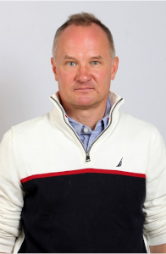Galley FOG recovery and prevention
Greywater treatment is more than just an obligation
The importance of greywater treatment cannot be overstated from an environmental sustainability perspective. Greywater is generated in maritime activities as a byproduct of washing and cooking. Greywater also entails ecological and regulatory implications. The use of efficient greywater treatment solutions not only ensures compliance with regulations but also promotes a greener and more sustainable maritime industry.
Greywater treatment refers to the removal of impurities, particles, and pollutants before releasing water into the sea. This reduces the impact of wastewater on the marine ecosystem. Uncontrolled discharge of greywater into the sea can disrupt marine life balance due to increased nutrients, decreased oxygen, and spread of harmful pathogens.
By investing in advanced greywater treatment technologies, ships can significantly reduce their environmental impact. Modern water treatment systems utilize state-of-the-art filtration, chemical, and purification processes to ensure that greywater meets international emission standards. This protects marine biodiversity and maintains the ship's reputation as a responsible operator.
Proper greywater treatment improves ship hygiene and comfort. Removing impurities from wastewater reduces odors and potential health risks.
Modern greywater treatment on ships goes beyond compliance with regulations. It directly promotes ecosystem preservation, supports sustainability, and raises the ship's quality standards. Effective greywater treatment is not just a legal obligation but a step towards a more sustainable future of maritime transport.
What is Fats, Oils, and Grease (FOG)?
FOG is an international abbreviation for fats, oils, and grease. FOG waste accumulates in the ship's greywater pipelines. FOG waste is generated in cooking from fats, food residues, cooking oil, butter and margarine, sauces, mayonnaise, salad dressings, sour cream, and other fatty ingredients. When FOG waste enters the pipes, it can solidify, causing blockages and overflows. FOG waste also reduces the system's capacity (slows down flow) and disrupts the wastewater treatment process. As a result, the ship's crew must spend significant time and effort removing accumulated fats and oils.
Installing grease and oil separators in galleys is a legal requirement. Failure to install separators can cause problems in the ship's collection tanks, where greywater ends up. When fat and oil accumulate on the surface of the tank, they inhibit nitrogen metabolism, promoting the growth of anaerobic bacteria. This results in the production of corrosive sulfuric acid, which is further promoted by the effect of chemicals used in the system. Sulfuric acid damages steel bulkheads and combines with chlorine used in water purification, producing dangerous gases in confined spaces.

